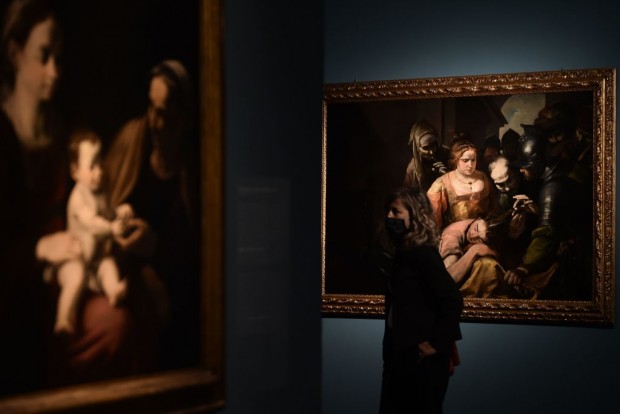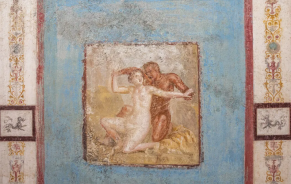As the art market cools, wealthy individuals are turning into their art collections for loans instead of selling them.Major banks like Bank of America and JPMorgan Chase have reported a rise in clients borrowing against their valuable art pieces. This trend allows clients to access cash without parting with their prized collections, according to a report Yahoo Finance.
Notably, art sales have greatly slowed down, with the major May auction season in New York seeing a 23% drop in value compared to the previous year. This slowdown has led many affluent art owners to seek alternative ways to raise funds.

(Photo : FILIPPO MONTEFORTE/AFP via Getty Images)
Instead of selling their art in a down market, they are opting to take out loans, hoping for better market conditions in the future
Also Read: Mark Zuckerberg Honors Wife 'Roman Tradition' Style with 7-Foot Statue by Artist Daniel Arsham
How does art lending work?
According to My Art Broker, art lending works by allowing wealthy individuals to borrow money using their art collections as collateral. The process typically begins with an appraisal to determine the value of the art pieces, which must meet a minimum value threshold, often in the millions.
Once the value is established, the lender, usually a bank, offers a loan that is a percentage of the art's appraised value, commonly around 50%. The loan functions like a line of credit, where borrowers can draw on it and repay it as needed.
The appeal of art lending lies in the stability of art as an asset. Unlike stocks, art doesn't experience daily market fluctuations and is typically valued annually, making it a secure form of collateral.
Borrowers can keep the art in their possession, provided it meets certain conditions, such as being insured and kept within a specific geographic location. The loan terms generally range from one to three years, with the option to renew.
This form of lending is particularly attractive during times of market volatility or when selling art might not yield favorable returns, as reported by The Art Newspaper. Instead of selling their art in a down market, individuals can borrow against it, allowing them to access liquidity while waiting for better market conditions. At the same time, banks benefit by offering these services as a way to attract and retain high-net-worth clients.
Art Lending Services
To meet the growing demand for art loans, major banks are expanding their art lending services.
Bank of America, which started its art services group in 2017, now holds over 30% of the market share, according to industry reports.
Citigroup and JPMorgan Chase are also actively promoting their art loan products to attract and retain wealthy clients.
Art loans are appealing to investors because art is a stable asset that doesn't fluctuate in value as much as stocks. These loans function as lines of credit, allowing borrowers to draw on them and repay as needed. Typically, to qualify for such loans, a collection must be worth at least $10 million, with individual pieces valued at $100,000 or more.
Related Article: Kanye West's Wife Bianca Censori Channels the Flintstones in Bold Stone Age-Inspired Architecture


















